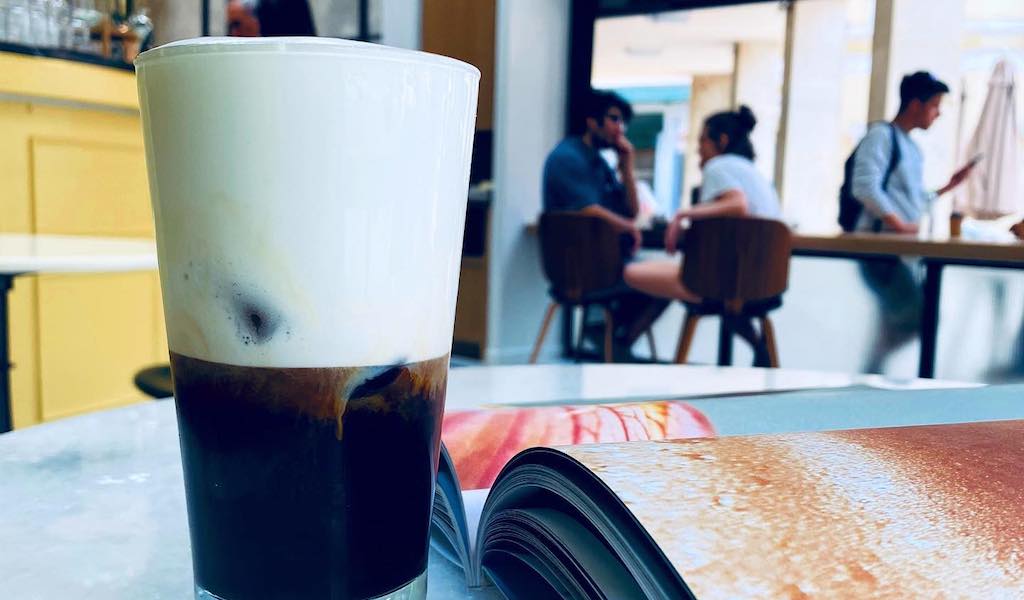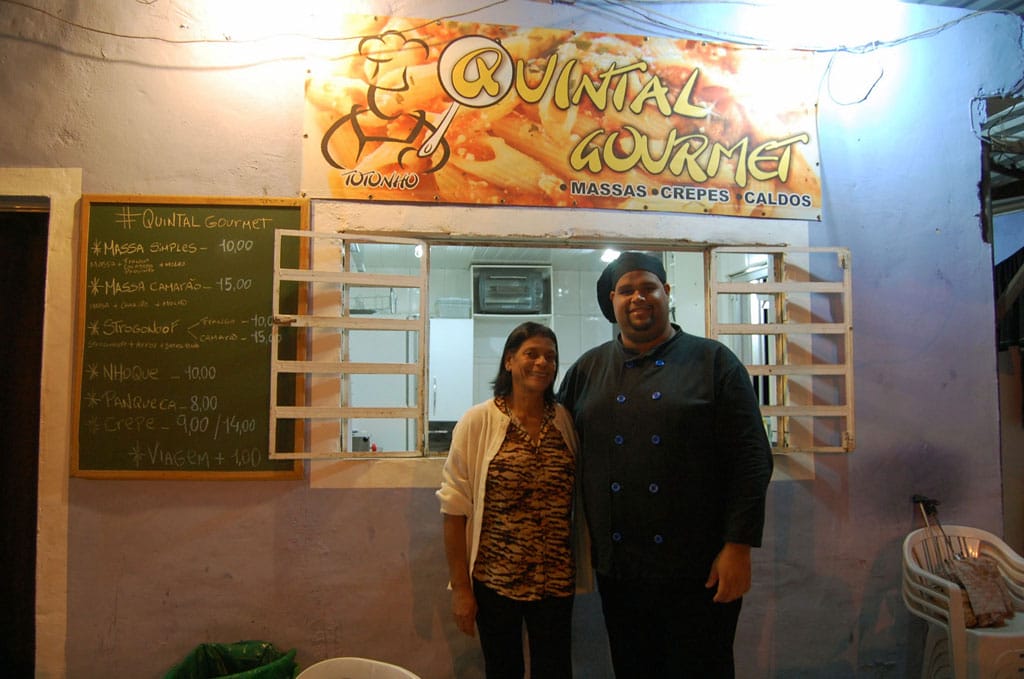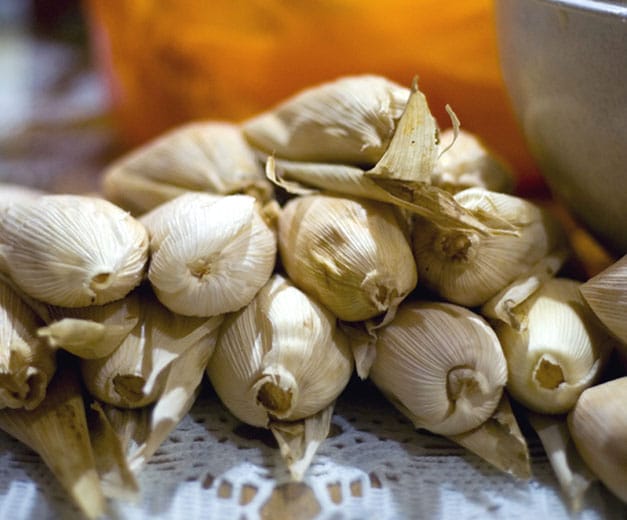It was August 31, 1957, and Yiannis Dritsas, a representative of Nestlé Greece, was at the 22nd Thessaloniki International Fair. His mission? To present a new iced chocolate drink for kids. It was simple, really: add milk and cocoa powder to a shaker (essentially a cocktail shaker), shake well and serve.
During a break, an employee of the same company named Dimitris Vakondios went to the kitchenette to prepare his regular instant coffee – using Nescafé, Nestlé’s coffee brand, of course. But he couldn’t find hot water anywhere. Desperate for his caffeine, he decided to try and copy what his boss was presenting to the public, only instead of cocoa powder he used his instant coffee and instead of milk he used cold water. In the shaker it went and boom, the frappé was born. It would go on to become one of Greece’s most famous drinks.
At the time, people saw the frappé as a beverage rather than a coffee. Until then, iced versions of coffee didn’t really exist in the country. This version was not just a drink to wake you up, but it was also refreshing, being served over ice. It was ideal for the warm Mediterranean climate, and soon the frappé became immensely popular.
Its name is obviously not Greek: Frappé is French and refers to iced drinks. The word derives from the French verb frapper, meaning to hit or strike, likely a reference to the beating movement of a shaker. Greeks refer to it in various ways, from the classic frappé, to the more Greek frappes or the more slang frapogalo, in which milk is added in at the end (gala means milk).
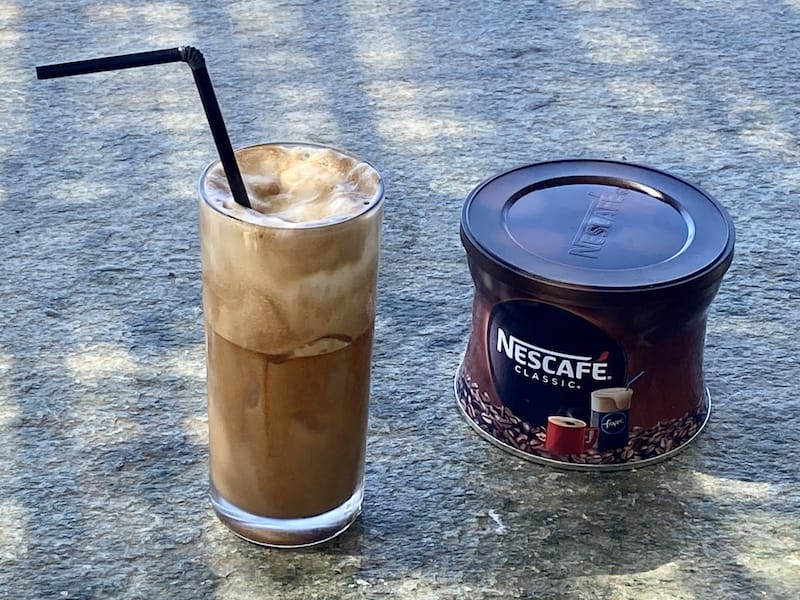
The frappé is simple and quick to make, and doesn’t require much equipment. It can be made in a shaker (or even a jar could work), or for the more sophisticated version, with an electric frother (which is what you’ll taste if you order it at any coffeeshop around the country). First you put in instant coffee, which is traditionally Nescafé, then sugar (if you take any), and then a small amount of water. Then shake (or froth, if using an electric frother) well to dissolve the coffee (and sugar, if using) and create a rich, thick froth. Serve in a glass over ice, add extra cold water and finally milk (optional and to your liking). The drink is always served with a straw, as the foam is too thick on top to reach the actual coffee below.
Nestlé Greece wisely invested in marketing the drink, making Nescafé synonymous with frappé; for several years, some people even called it Nescafé frappé. For half a century, it was among the most popular summer beverages, even though it’s quite strong and can be harsh on the stomach – the flavor, the refreshing feeling and the dose of caffeine blinded people to any negative effects.
That was until the freddo came into the picture. In 1991, the company that imported Illy coffee, an Italian brand, to Greece decided to make a Greek version of a freddo (iced) coffee – their answer to the frappé. Rather than instant coffee, a double shot of espresso is shaken well and iced to create a more sophisticated and high-quality iced coffee compared to the frappé. It very quickly grew more popular than iced instant coffee – at the time, Illy Greece sold more coffee in Greece than in Italy and Europe combined.
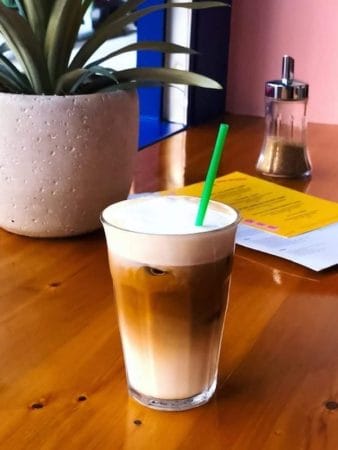 The freddo comes in two forms: a freddo espresso or a freddo cappuccino. The latter is topped with frothed cold milk, which involves adding cold milk and a couple of ice cubes to an electric frother, creating delightfully thick milk froth. Usually the freddo cappuccino is sprinkled with powdered cinnamon or cocoa powder. These too are served with a straw to allow you to drink from the bottom layer or mix in the milk as you see fit.
The freddo comes in two forms: a freddo espresso or a freddo cappuccino. The latter is topped with frothed cold milk, which involves adding cold milk and a couple of ice cubes to an electric frother, creating delightfully thick milk froth. Usually the freddo cappuccino is sprinkled with powdered cinnamon or cocoa powder. These too are served with a straw to allow you to drink from the bottom layer or mix in the milk as you see fit.
Nowadays the freddo is the summer drink of choice in Greece (although many Greeks consume it all year long). And as coffee drinkers have become more sophisticated, they have become more particular about their freddos: It’s not uncommon to hear requests for a certain coffee blend or roast, almond milk (or other nut milks) in place of cow’s milk or even high-quality ice that doesn’t melt as fast. And increasingly conscious of the environment, many spots now offer biodegradable straws or even hollow bucatini-like pasta, which is used for the traditional Greek dish of pastitsio (pastitsio pasta in a bit thicker and the hollow center is larger too, resembling the size of a straw). In fact, the freddo is so popular that the more recent global trend of cold brew coffee has barely made a dent in Greece.
Nowadays the freddo is the summer drink of choice in Greece (although many Greeks consume it all year long).
One of our favorite spots for a freddo in central Athens (which is full of quality coffee shops) is Dope, a micro-roaster that opened last year on Athinas Street, between Monastiraki Square and the Central Food Market. Co-owner Antonis Tzaroukian oversees the coffee roasting, which is done entirely on the premises, and is also a huge fan of the freddo, which they call cryo (κρύο) at Dope. In his expert opinion, beans from Ethiopia, Kenya and Congo are best for iced coffee since they tend to contain more natural sugars, and when roasted properly they develop a natural sweetness that makes the final result more pleasant. Plus they usually have more fruity and floral aromas that really sing in an iced coffee like the freddo. And, he adds, since you are essentially adding more oxygen to the coffee by blending it, “you need to use an intense coffee blend to acquire a good result without it feeling watery or too flat.”
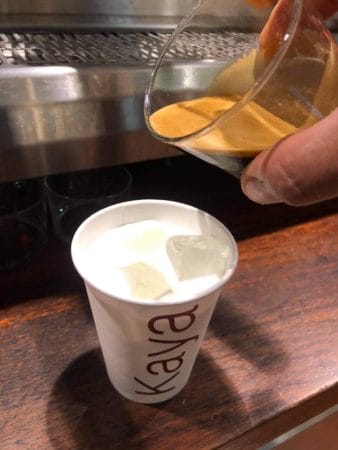 We’re also partial to Kaya, located in an arcade off Voulis Street. Since opening in the summer of 2013, it has become one of the best espresso bars in town – there are no tables, so you’ll mostly see people getting their coffee to go. Co-owner Lambros Iriotis believes that a good freddo depends on ensuring that all the ingredients are high quality. Like, for instance, the milk in their freddo cappuccino. “Our milk is organic and has a great taste,” he says. “Coffee can be ruined by low-quality milk.” Here, they make their freddo slightly differently: milk is frothed and poured over ice in the glass, over which they pour a double shot of their house blend espresso (featuring beans from Brazil, Colombia and Guatemala), without shaking or icing the espresso in advance.
We’re also partial to Kaya, located in an arcade off Voulis Street. Since opening in the summer of 2013, it has become one of the best espresso bars in town – there are no tables, so you’ll mostly see people getting their coffee to go. Co-owner Lambros Iriotis believes that a good freddo depends on ensuring that all the ingredients are high quality. Like, for instance, the milk in their freddo cappuccino. “Our milk is organic and has a great taste,” he says. “Coffee can be ruined by low-quality milk.” Here, they make their freddo slightly differently: milk is frothed and poured over ice in the glass, over which they pour a double shot of their house blend espresso (featuring beans from Brazil, Colombia and Guatemala), without shaking or icing the espresso in advance.
Equally important is the ice. “Before opening the shop in 2013 we had to wait for a top-of-the-line ice machine. Even though we were ready to open, we didn’t until we got the Hoshizaki ice dispenser!” Lambros tells us. This machine produces ice cubes that melt very slowly, so you can sip your coffee for longer without it getting watered down. “Your first sip is as good as your last sip with this kind of ice,” he adds.
For a non-dairy option, we go to Joshua Tree Café (although they prepare regular freddos, too). The cafe opened right after lockdown began; even so, it quickly became popular with coffee lovers and vegans. Here you can choose between coffee from Brazil, Ethiopia or Papua New Guinea. What we particularly love is their blend of coconut and oat milk, which are creamed. It adds a natural sweetness and beautiful aroma to the coffee. We like to pair our freddo with one of their matcha cookies or other vegan snacks.
A lot has changed between 1957 and now – a simple iced instant coffee has been elevated into an art form. Now when you walk down the streets of Athens, stroll along Greece’s beaches, hop on a ferry or sit down at a café, you won’t be surprised by the dozens of people with a freddo (or, on rare occasion, a frappé) in hand – here, iced coffee is king.
Editor’s note: Our Liquid Assets series offers an occasional look at key beverages – alcoholic and non – that help define the culinary cultures that CB covers.
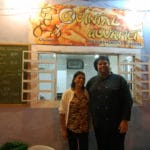 July 26, 2016 Quintal Gourmet
July 26, 2016 Quintal Gourmet
Quintal Gourmet is the story of a doting son, one who's also delighted to be able to […] Posted in Rio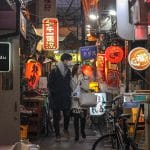 January 14, 2019 Going Deep
January 14, 2019 Going Deep
As the calendar year turns over, we’ve grown accustomed to the barrage of lists telling […] Posted in Istanbul, Special category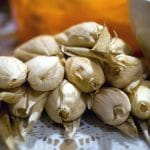 February 2, 2015 Tamales
February 2, 2015 Tamales
As we mentioned in our piece about Rosca de Reyes, February 2 is an important date in […] Posted in Mexico City
Published on August 28, 2020
Related stories
July 26, 2016
RioQuintal Gourmet is the story of a doting son, one who's also delighted to be able to spend more time in his home, the City of God. Yes, the one from the movie. Carlos Vinícius, 29, a man as towering as he is smiley, looks at his mother, wiry and fast-talking Joyce, with a doe-eyed…
January 14, 2019
Istanbul | By Culinary Backstreets
IstanbulAs the calendar year turns over, we’ve grown accustomed to the barrage of lists telling us where to travel during the next 12 months. Oftentimes these places are a country or even a whole region – you could spend an entire year exploring just one of the locations listed and still barely make a dent.…
February 2, 2015
Mexico CityAs we mentioned in our piece about Rosca de Reyes, February 2 is an important date in the Mexican calendar - for Candlemas and, relatedly, for tamales. True, tamales are one of the most popular foods in Mexico City, and we can find all kinds of reasons for eating them any day of the week.…







































